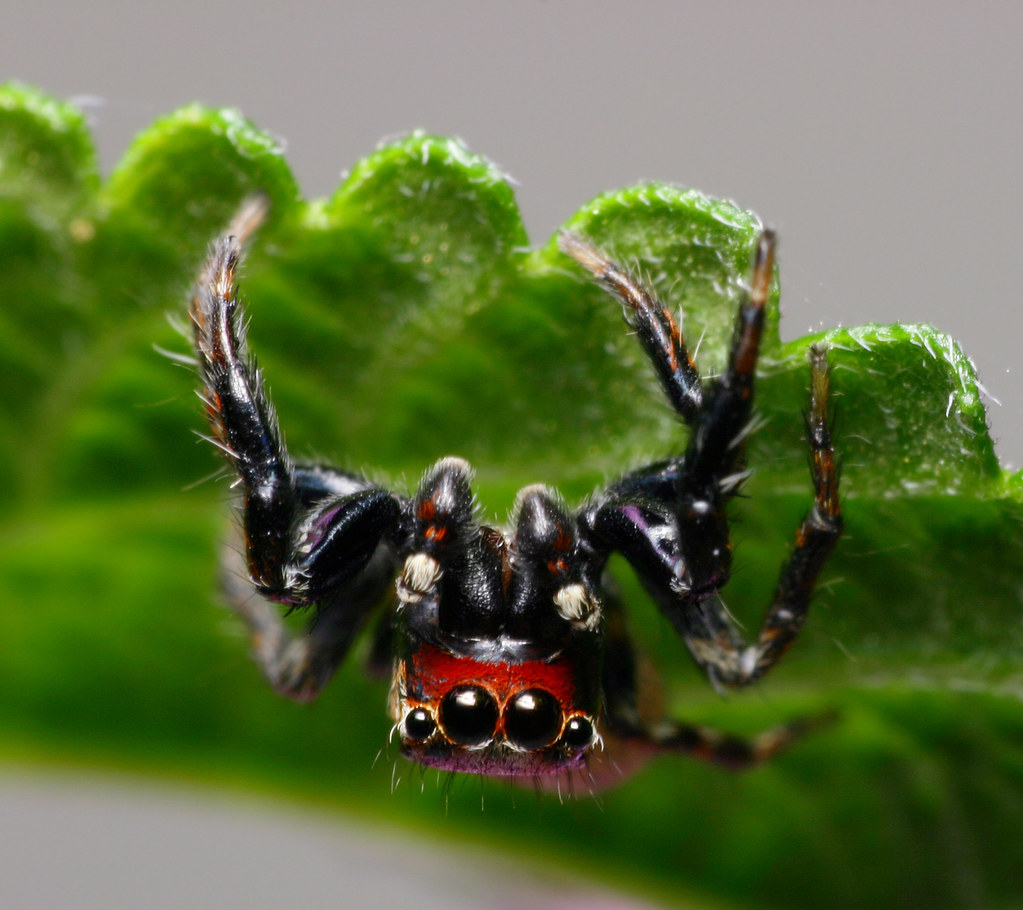Mosquito Terminators: A review published by icipe and University of Canterbury, New Zealand
10 July 2015: An extensive review undertaken by icipe and the University of Canterbury, New Zealand, on the only two spider species known to specifically target mosquitoes, Evarcha culicivora and Paracyrba wanlessi has been published in the current issue of the Journal of Arachnology.
The two jumping spiders occur continents apart and in different habitats. E. culicivora is found only around Lake Victoria, in East Africa, where it is mostly seen on walls of occupied buildings. P. wanlessi is present only in Malaysia, often situated in bamboo culms. However, these two spiders both feed preferentially on mosquitoes, and are the only ones that can currently be characterised as “mosquito specialists” (that is, they are predators that specialise in killing mosquitoes).
“Our research has shown that the manner in which E. culicivora and P. wanlessi specialise on mosquitoes is strikingly different. E. culicivora is particularly drawn to the malaria-transmitting female Anopheles mosquitoes whose guts are filled with blood. Like an eight-legged vampire, it seeks them out and destroys, or terminates, them. P. wanlessi prefers to feed on mosquito larvae lurking in pools of water inside bamboo,” explains Prof. Robert Jackson, the research leader.
He adds: “In their own different ways, E. culicivora and P. wanlessi are in fact highly specialised mosquito assassins. They both ignore any other insects that get in the way as they pursue their target victims – mosquitoes.”
This unique research review focuses on what is now known about the biology of E. culicivora and P. wanlessi and it highlights the ways in which these mosquito terminators can help us understand what is meant by ‘predatory specialisation’. It also poses the question as to whether mosquito terminators can be exploited for the biological control of malaria vectors, especially in view of the predominant fear and loathing of spiders.
Notes for Editors
Research Details
- Publication: Jackson R.R. and Cross F.R. (2015) Mosquito-terminator spiders and the meaning of predatory specialization. Available at:http://www.americanarachnology.org/JoA_free/JoA_v43_n2%20/arac-43-2-123-142.pdf
- Funding: This research was supported by grants from the Royal Society of New Zealand (Marsden Fund and James Cook Fellowship), the National Geographic Society, New Zealand Foundation of Research, Science and Technology, and the United States National Institutes of Health.
- Corresponding author: Robert R. Jackson, robert.jackson@canterbury.ac.nz
Media Contacts
- Liz Ng’ang’a, Communications Consultant, icipe, Lnganga@icipe.org
- Photos: https://www.flickr.com/photos/icipeinsects/sets/72157655582947516


